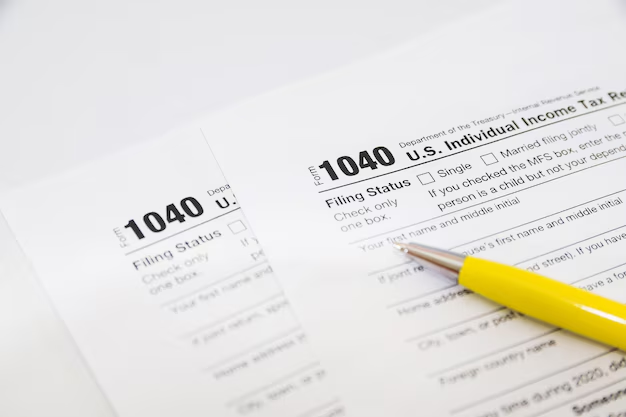Navigating IRS Payment Plans: A Complete Guide to Your Options
Tax season can be a stressful time, especially when facing a tax bill that seems insurmountable. Fortunately, the IRS understands that not everyone can pay their taxes in one go. So, does the IRS offer payment plans? The answer is a resounding yes. Let's delve deeper into how these payment plans work, the options available, and how they can ease your tax burdens with practical steps to manage your payments effectively.
Understanding IRS Payment Plans
An IRS payment plan, also known as an installment agreement, is a program that allows taxpayers to pay their taxes over time rather than in one lump sum. This can be a great relief for those who need more time to settle their tax liabilities without incurring severe penalties.
Types of IRS Payment Plans
The IRS offers several payment plan options tailored to different financial situations. These include:
Short-Term Payment Plan: Typically allows you to pay your taxes in 120 days or less. This plan includes no setup fee, making it an attractive option for those who can pay off their balance within a few months.
Long-Term Payment Plan (Installment Agreement): This option is for those who need more than 120 days to pay their taxes. Unlike the short-term plan, there is a setup fee, which varies depending on the payment method and whether you apply online or by phone/mail.
Partial Payment Installment Agreement: For taxpayers who can't pay their full tax liability, this plan allows for monthly payments over a more extended period. It may result in only paying part of the total taxes owed, but it requires more detailed financial information and IRS approval.
Offer in Compromise: While not a payment plan in the traditional sense, this allows taxpayers to settle their tax debt for less than the full amount owed. It’s generally only available under specific circumstances and requires detailed financial disclosure.
Eligibility Criteria
How to Qualify
Before applying, it's essential to understand the criteria for eligibility. Here are the general requirements:
Current Tax Filings: You're required to be up-to-date with all your tax return filings. The IRS will not approve an installment agreement if you're delinquent on filing.
Tax Debt Limits: Different plans have varying limits on the amount of tax debt. For instance, if you owe $50,000 or less, you might qualify for an online payment agreement.
Financial Disclosure: Certain plans, like the Partial Payment Installment Agreement and Offer in Compromise, necessitate detailed financial information.
Application Process
Applying for an IRS payment plan can be straightforward if you understand the steps involved:
Review Your Financial Situation: Determine how much you can realistically afford to pay each month.
Choose a Plan: Based on the amount owed and your financial situation, select the most appropriate payment plan.
Apply Online or via Form 9465: For most cases, applying online is the quickest method. Alternatively, you can file Form 9465, Installment Agreement Request.
IRS Response: After submitting your application, the IRS will respond with either an acceptance or a request for more information.
Benefits and Considerations of IRS Payment Plans
Advantages
Opting for a payment plan can offer multiple benefits:
Reduced Immediate Financial Burden: Spreads the tax debt into manageable payments.
Avoids Penalties: While interest and late payment penalties may still apply, they are generally less than the failure-to-pay penalty.
Avoids Liens and Levies: As long as you comply with the terms, you avoid harsh collection actions.
Considerations
However, there are some important factors to consider:
Interest and Fees: Payment plans may include setup fees and will often accrue interest on unpaid amounts.
Strict Compliance: You must strictly follow the installment agreement terms; defaulting can lead to penalties and collections.
Credit Impact: While your agreement generally doesn’t impact credit scores, serious delinquencies can trigger liens, affecting credit.
Practical Tips for Managing an IRS Payment Plan
Budget Effectively
Planning your budget to accommodate monthly payments is crucial. Here are a few tips:
Evaluate Monthly Income and Expenses: This helps in setting a realistic monthly payment amount.
Implement Cost-Cutting Measures: Consider reducing discretionary spending to ensure you have room for your tax payments.
Communicate with the IRS
If you run into trouble:
Contact Early: If you face financial difficulties, get in touch with the IRS early to discuss potential adjustments to your plan.
Consistent Payments: Aim to make your payments on time consistently to avoid default.
Key Takeaways
To help you navigate the complexities of IRS payment plans, here are some quick tips and vital points summed up:
- 📑 Choose Wisely: Evaluate your financial standing and select the plan best suited to your needs.
- 📅 Apply Early: The sooner you set up an agreement, the quicker you can avoid penalties.
- 📈 Monitor Finances: Keep a close watch on your financial health to maintain payment compliance.
- 📞 Communicate: If problems arise, contact the IRS to explore adjustments.
- 🏦 Budget Strategically: Ensure your cash flow can support monthly payments without impacting essential expenses.
Final Insight: Making the IRS Payment Plan Work for You
Navigating IRS payment plans can seem overwhelming at first, but these plans are designed to alleviate the burden of tax debt, allowing you to maintain financial stability. By understanding your options and adhering to a disciplined financial strategy, you can manage your tax liabilities effectively. Whether choosing a short-term or long-term plan, embracing a proactive approach and staying informed about your obligations can help ensure a smooth journey towards resolving your tax debts.

Related Topics
- Are Irs Economic
- Are Irs Economic Impact Payments Still Available
- Are We Getting Ctc Payments In 2024 Irs
- Can Form 8822 Be Faxed To Irs
- Can I Brown Act Irs
- Can I Call The Irs
- Can I Edit Any Irs Payment After I Did It
- Can I Go To Irs For Support
- Can I Have The Irs Apply My Overpayment If Divorced
- Can I Make Payments To The Irs